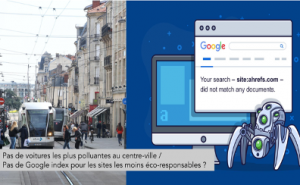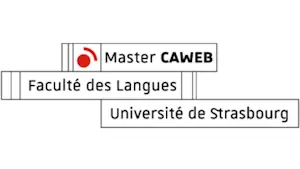The Future Prospects of Green IT
Green IT in Full Swing
According to António Guterres (Secretary General of the United Nations), half of the world’s population still did not have access to the Internet in 2019. However, the UN will submit an action plan to ensure that every adult is connected by 2030[1]. This decision shows that the digital era is the next step in the development of our businesses.
Eco-responsible solutions are already appearing in sectors such as the automobile industry. In the same vein, “Green IT” (“sustainable computing“) is gradually becoming a part of Internet users’ habits. Web agencies have followed this evolution. In fact, they present ecological design as an asset and offer a distinctive service to new customers. For example, Studio Noéma Design, a studio that offers responsible design, focuses on simplicity, moderation, and relevance[2]. Indeed, “Eco web design can be adapted to all companies, regardless of their size and sector, with the goal of saving money, offering a better user experience, but above all, reducing their ecological footprint.[3]” While the details are lacking for the moment, Europe is still trying to establish a global eco-label for all consumer products, including IT! [4] There is no longer any doubt that Green IT and the businesses that go with it are on the rise.
Green IT and the Digital Landscape of Tomorrow
Adaptability is the word-to-watch for web designers of tomorrow! Keeping a close eye on technological developments and new ecological trends will become essential skills. Want to participate in sustainable development by creating eco-friendly sites for eco-conscious clients? Then become a pro of ultra-minimalist design or let yourself be seduced by dark mode! So many new perspectives are now available for the technology sectors of tomorrow.

No polluting cars in the city center. No Google-index for the least eco-responsible sites?
“The ecological transition is the essential horizon of our businesses; the digital transition is the great transforming force of our time. The first knows its destination but is struggling to find its way; the second is our daily lives, a permanent force for change, but one that does not pursue any particular collective objective. One has the goal, the other the path: each of the two transitions needs the other! ”[5] This is the conviction that the FING (New Generation Internet Foundation) presents in its publication, “The Agenda for a Digital and Green Future“, in March 2019. Therefore, everyone in the digital world has a responsibility to combine their digital work with ecology and transform our hyper-connected society into a better and more sustainable world.
Within the framework of the Citizen’s Climate Convention, several proposals have been submitted, such as banning the most polluting cars from the city center. But what about digital? One could imagine the creation of a carbon footprint label for websites. Why not introduce sanctions for sites deemed too polluting? There are so many subjects that are at the heart of digital issues and that will shape the digital environment of tomorrow. But, if we’re only in the realm of speculation, one thing is certain: Green IT is the rising trend.
Written by Shu-Min Huang
Other articles
-

Emerging Technologies : Exploring New Opportunities for Immersive Art Experiences
-

Poetry in translation is like taking a shower with a raincoat on: was the Japanese poet right?
-

Open data: a gold mine for innovation, research and marketing
-

How to communicate on social media during a pandemic crisis?

